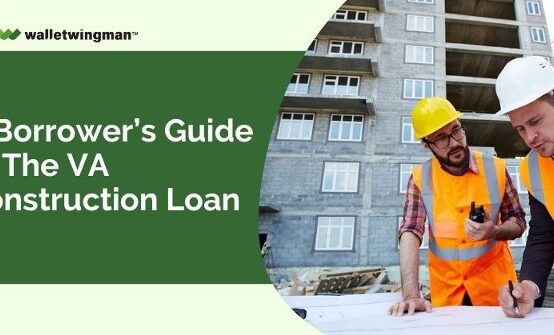Home buyers who use VA loans often consider the application and pre-approval as the first steps in the mortgage process. But in reality, the journey should start before all of that.
Before you even apply for a VA loan, there are specific preliminary steps you can take to maximize your chance for home-buying success. Here are seven of them.
1. Find Out If You’re Eligible for the Program
The VA loan process begins with research. And one of the first things you must consider is your eligibility status. The U.S. Department of Veterans Affairs website offers detailed guidelines relating to VA loan eligibility.
This program is primarily limited to military members and veterans. This includes active-duty military with at least 90 days of service and National Guard and Reserve members with six years of regular service. Guard and Reserve members can also be eligible if they serve on active duty for at least 90 days.
Furthermore, when using a VA loan to purchase a home, the property must meet specific requirements of the Department of Veterans Affairs. Some key points regarding VA loan property requirements include:
- The property must fulfill the Minimum Property Requirements (MPRs) set forth by the VA. These requirements guarantee the home’s hygienic conditions, safety, and sound structural integrity.
- The property must be used primarily for residential purposes. VA loans cannot fund vacation homes or investment properties.
- The VA must appraise the property to assess its worth and assure compliance with the MPRs.
- The property should be free of safety hazards and meet basic accessibility standards. This includes having adequate heating, ventilation, and utilities.
2. Learn Everything You Can About the Program

VA loans offer many benefits, including no down payment or mortgage insurance. You must research the nuts and bolts to determine if it’s right for you.
VA loan preparation is an in-depth learning process. You must learn how these loans work, what benefits they can provide, and what requirements you must meet.
To aid you in this mission, we’ve published a series of helpful guides relating to the VA loan guidelines and program. You can use the search tool near the main menu to access our ever-growing library of tutorials and guides.
For starters, check out these helpful resources:
- The minimum requirements for borrowers
- Steps in the VA loan home buying process
- How long you have to serve to be eligible
3. Research Other Financing Options
The VA loan program has a lot to offer. But it’s not your only mortgage financing option. If you’re planning to buy a home shortly, research the other types of mortgage loans.
Like the FHA program, VA loans are government-backed mortgages. Both receive some form of insurance or guarantee from the federal government, which reduces risk for the lenders who offer these loans.
On the other side of the fence, we have conventional loans that do not receive any government insurance backing. Conventional financing accounts for most mortgage loans generated in the U.S. every year.
However, the VA loan program is hard to beat for military members and veterans. It offers flexible qualification criteria and the chance to buy a house with no down payment. As you research other mortgage options, you’ll begin to understand the value of this program.
4. Create a Basic Housing Budget for Yourself

Budgeting is another crucial step in the VA loan preparation and research process.
Spend some time thinking about your housing budget. How much of a monthly payment can you afford on top of your other recurring debts? What’s your maximum, and how much is too much?
Ideally, you’ll be able to answer these questions before applying for a VA loan or beginning the house-hunting process. Fortunately, the VA home loan process itself is pretty straightforward.
Subtraction is the easiest approach to budgeting. Start subtracting your non-housing recurring debts from your net monthly income (or take-home pay). Next, subtract an additional amount that represents savings contribution and lifestyle expenses.
The final leftover number represents the maximum amount you could put toward your monthly housing costs. And you should shave that down a bit more to keep some emergency funds in the bank.
5. Start Saving For Closing Costs and Other Expenses
When budgeting, be sure to account for your potential closing costs. While the VA loan program allows you to finance the entire purchase price, it usually brings closing costs for home buyers.
These costs typically range from 2% to 5% of the purchase price, which can add up to thousands of dollars for a typical home purchase. So, the best time to start saving is right now.
6. Weigh The Pros and Cons of Making a Down Payment

It bears repeating: Eligible military members and veterans can use a VA loan to buy a house with no down payment whatsoever. Even so, you should at least consider the benefits of making a down payment.
When you put money down on a VA-backed home purchase, you’re borrowing less from the lender. This results in a smaller monthly payment and less interest over the life of the loan. A down payment could also reduce your VA funding fee and help you get a lower rate.
Moreover, earnest money is another option when buying a home. Earnest money VA loan is a deposit made to a seller, often in the form of a check, that shows your commitment to purchasing the home. Usually, it is kept in an escrow account until the sale closes.
One of the key differences between a down payment and earnest money is that earnest money is typically refundable if the sale falls through due to reasons outlined in the purchase agreement. These reasons might include a failed home inspection or an inability to secure financing.
7. Get Up to Speed on Mortgage Rate Trends
There are several factors that will affect the mortgage rate that is applied to your VA loan, such as your credit score and the kind of loan (fixed or adjustable). But it still helps to do some mortgage rate research, prior to applying for a VA loan.
For starters, check out the Freddie Mac website. Freddie Mac is one of the “government-sponsored enterprises” that purchase loans from lenders and sell them to investors. They also conduct a nationwide weekly survey of mortgage rates offered by lenders.
When you see mortgage rate updates mentioned in the news, they’re usually based on Freddie Mac’s widely-cited survey. It’s located here: https://www.freddiemac.com/pmms.
All of these VA loan research and preparation strategies have something in common. With all of these steps, you are researching relevant topics to increase your knowledge and product awareness. This will enable you to choose wisely whether you take out a conventional mortgage or a VA loan.
How to Apply for a VA Home Loan

A VA-approved lender can assist you through the simple process of applying for a home loan, which entails multiple steps.
Here’s a general overview of how to apply for a VA home loan:
- Determine Your Eligibility: You must be an eligible veteran, active-duty military member, member of the National Guard or Reserve, or a qualifying spouse in order to be eligible for a VA home loan. Check the VA’s eligibility requirements to ensure you meet the criteria.
- Get Your Certificate of Eligibility (COE): Before applying for a VA loan, you’ll need to obtain your Certificate of Eligibility (COE) from the VA. Applying for your COE can be done via mail using VA Form 26-1880, online, or through your lender.
- Find a VA-Approved Lender: Find a lender that is approved to offer VA home loans. They will guide you through the application process and help you understand your options.
- Complete the Loan Application: Once you’ve chosen a lender, you must complete a VA loan application. You must provide personal information, financial details, and your COE.
- Wait for VA Home Loan Approval: The lender review your application and your credit history, income, and other factors. If you meet the requirements, you’ll receive a VA home loan pre approval or approval.
- Close the Loan: After your loan has been approved, you’ll sign the closing papers and get the keys to your new house during the closing process.
VA Loan Glossary
- Certificate of Eligibility (COE): The Department of Veterans Affairs (VA) issues a paper to eligible veterans or military members confirming their eligibility for a VA loan.
- FHA Loan: A Federal Housing Administration (FHA)-insured mortgage loan aimed at low- to moderate-income borrowers with poor credit scores.
- Fixed-Rate Mortgage: A mortgage loan having a fixed interest rate for the duration of the loan



 A Borrower’s Guide to the VA Construction Loan
A Borrower’s Guide to the VA Construction Loan  How to Buy a Condo Unit with a VA Mortgage Loan
How to Buy a Condo Unit with a VA Mortgage Loan  How Credit Scores Affect Mortgage Rates on a VA Loan
How Credit Scores Affect Mortgage Rates on a VA Loan  How Much Can I Borrow When Using a VA Loan to Buy a House?
How Much Can I Borrow When Using a VA Loan to Buy a House?  Benefits of a VA Loan Down Payment (Even Though It’s Optional)
Benefits of a VA Loan Down Payment (Even Though It’s Optional)  7 Potentially Costly VA Loan Mistakes, and How to Avoid Them
7 Potentially Costly VA Loan Mistakes, and How to Avoid Them 